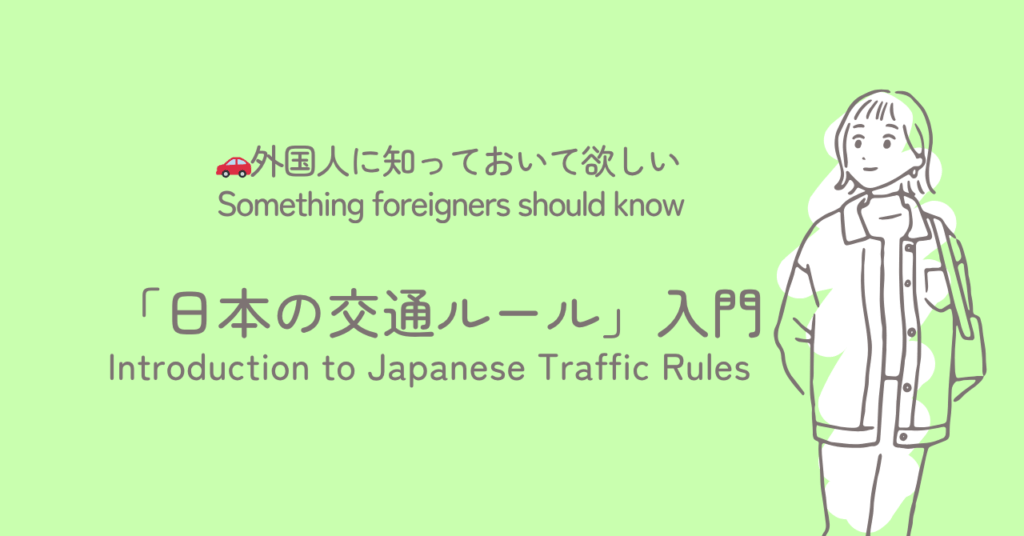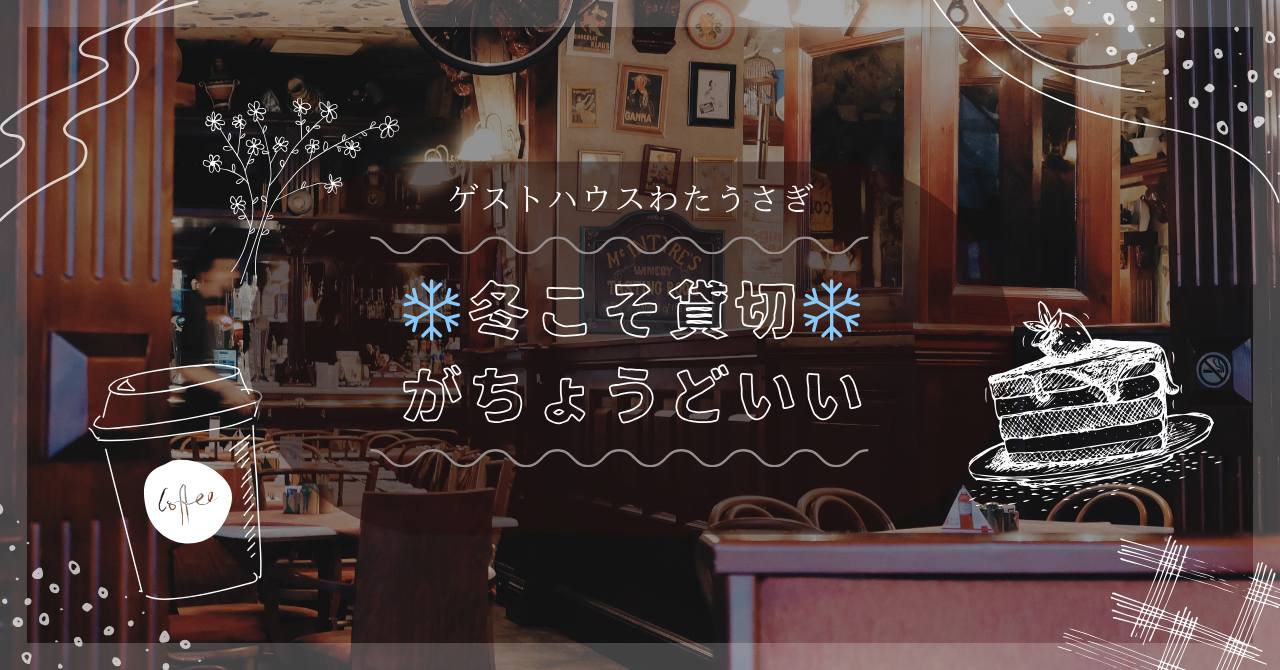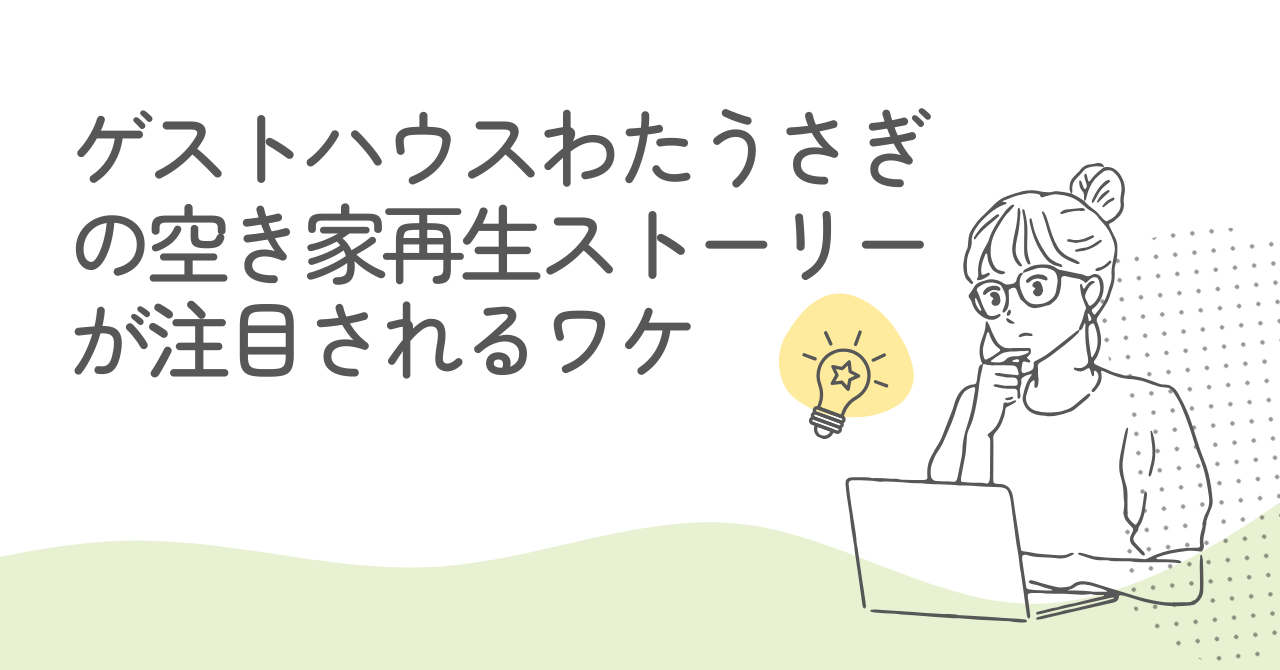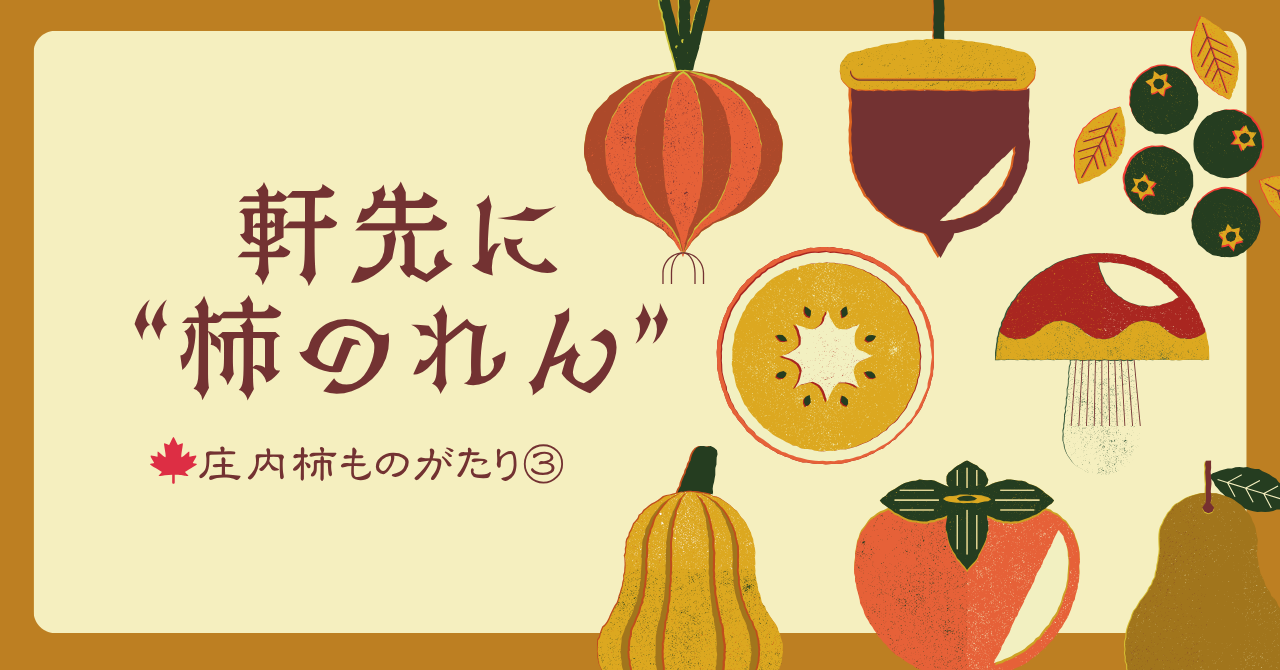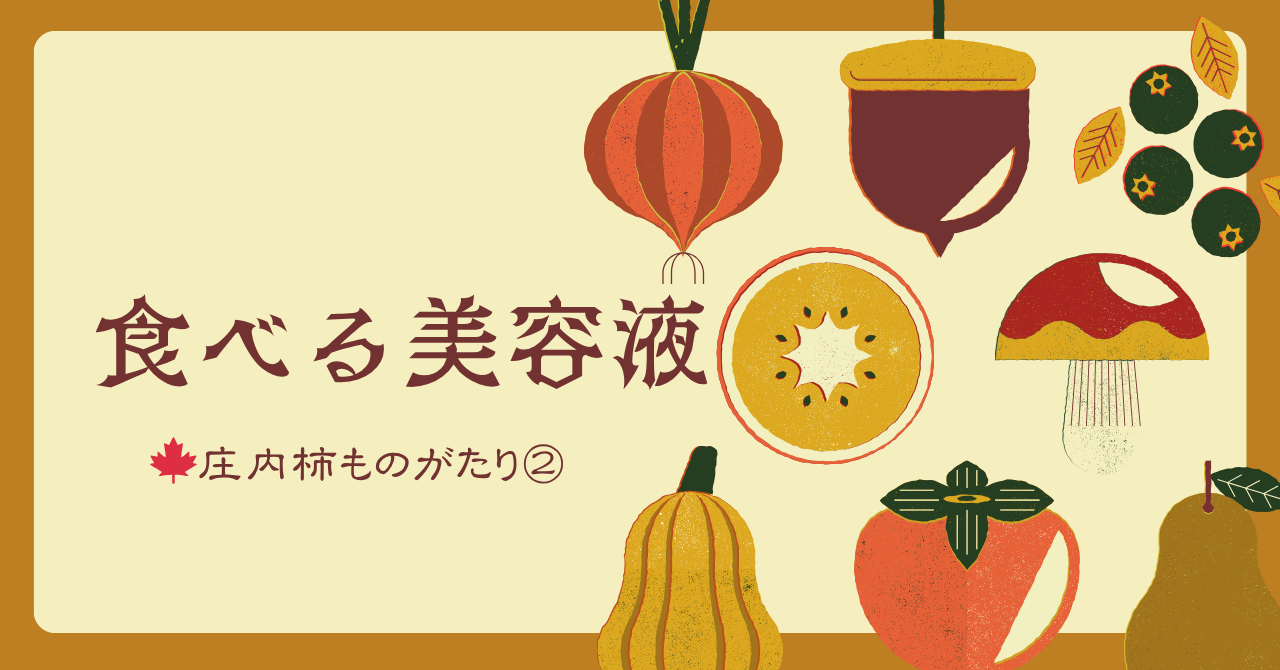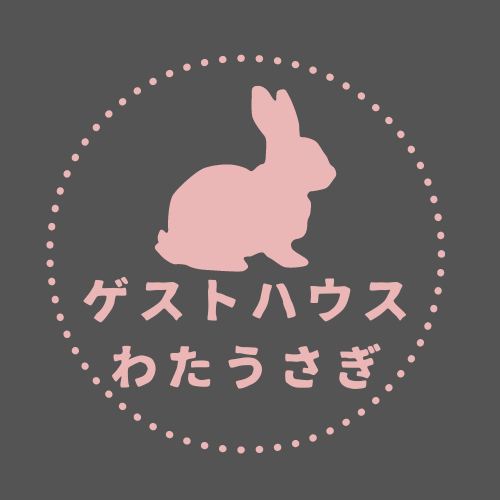Tsuruoka and the Shonai area have limited public transportation, so having a car makes sightseeing and staying in the region significantly more convenient.
In this context, more and more foreign travelers and long-term visitors are not only renting cars, but also using car-sharing services or even purchasing used cars or motorcycles.
However, Japanese traffic rules can be completely different from what’s considered common sense in other countries.
However, Japanese traffic rules can be completely different from what’s considered common sense in other countries.
This blog provides an easy-to-understand guide for first-time drivers in Japan, covering essential traffic rules, road signs, driving etiquette, and key differences from other countries—so you can drive with confidence.
Essential Rules You Must Know Before Driving in Japan
If you're going to drive on Japanese roads, make sure to understand these basic rules first.
They may seem simple at first glance, but be careful—many of them differ significantly from the rules in other countries.
-
🚗 Left-Side Driving (Right-Hand Drive) In Japan, vehicles drive on the left side of the road. If you're from a country where people drive on the right, you'll need to be especially cautious at first.
-
👥 Seatbelts Required for All Seats Seatbelts must be worn in all seats, including the back. Failure to comply can result in fines and penalty points.
-
📵 Using a Smartphone While Driving Is Prohibited In Japan, operating a smartphone while driving—including calls, navigation, or music apps—is not allowed. Hands-free calls are permitted, but avoid any actions that take your eyes off the road.
-
🍺 Drunk Driving Is Strictly Prohibited In Japan, even a trace amount of alcohol can be considered a violation. The rule is simple: if you drink, don’t drive.
-
🛑 Stop Signs Mean “Come to a Complete Stop” At intersections marked with a “STOP” sign, you must come to a full stop—not just slow down. These signs are commonly found at T-junctions and blind intersections.
-
🧑🦯 Pedestrians Have the Right of Way At crosswalks, pedestrians always take priority. Even if someone is simply standing and waiting to cross, vehicles are required to stop.
These rules are legally enforced in Japan, and violations can result in fines or penalty points. For your safety and that of others, be sure to follow them and drive responsibly.
Don’t Miss the Road Signs! A Guide to Common Japanese Traffic Signs
Don’t Miss the Road Signs! A Guide to Common Japanese Traffic Signs Japanese roads feature many traffic signs, and their designs and meanings often differ from those in other countries. For detailed comparisons, the Ministry of Land, Infrastructure, Transport and Tourism provides helpful information on its official website.
https://www.mlit.go.jp/road/sign/sign/douro/world/wscomp/wscomp-2.gif
Key Points for Understanding Japanese Road Signs
-
Red circular or inverted triangular signs often indicate “prohibition” or “warning.”
-
Blue signs typically provide positive information, such as “guidance” or “permitted routes.”
-
Traffic rules still apply even without signs—for example, determining the priority road must be done by observing the situation carefully on site.
Although Japanese road signs have simple designs, many can lead to violations if missed. Especially when you're not yet familiar with them, be sure to check them carefully and consciously.
Especially in Tsuruoka, from the city center to the mountainous areas, signs such as “Slow Down,” “Road Closed,” and “Stop” are frequently posted. Be sure to keep your speed in check and drive safely to avoid missing them.
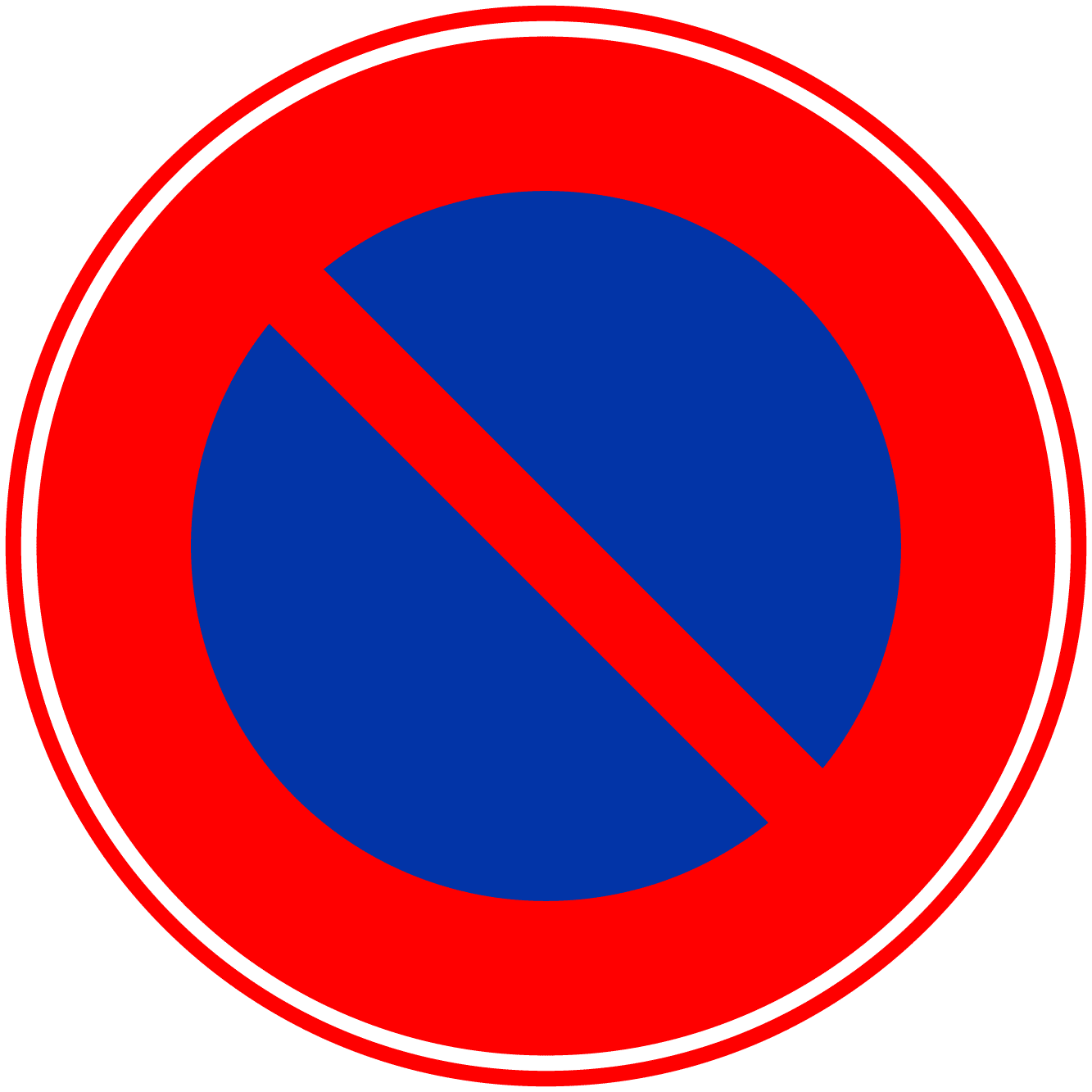
駐車禁止(No Parking)
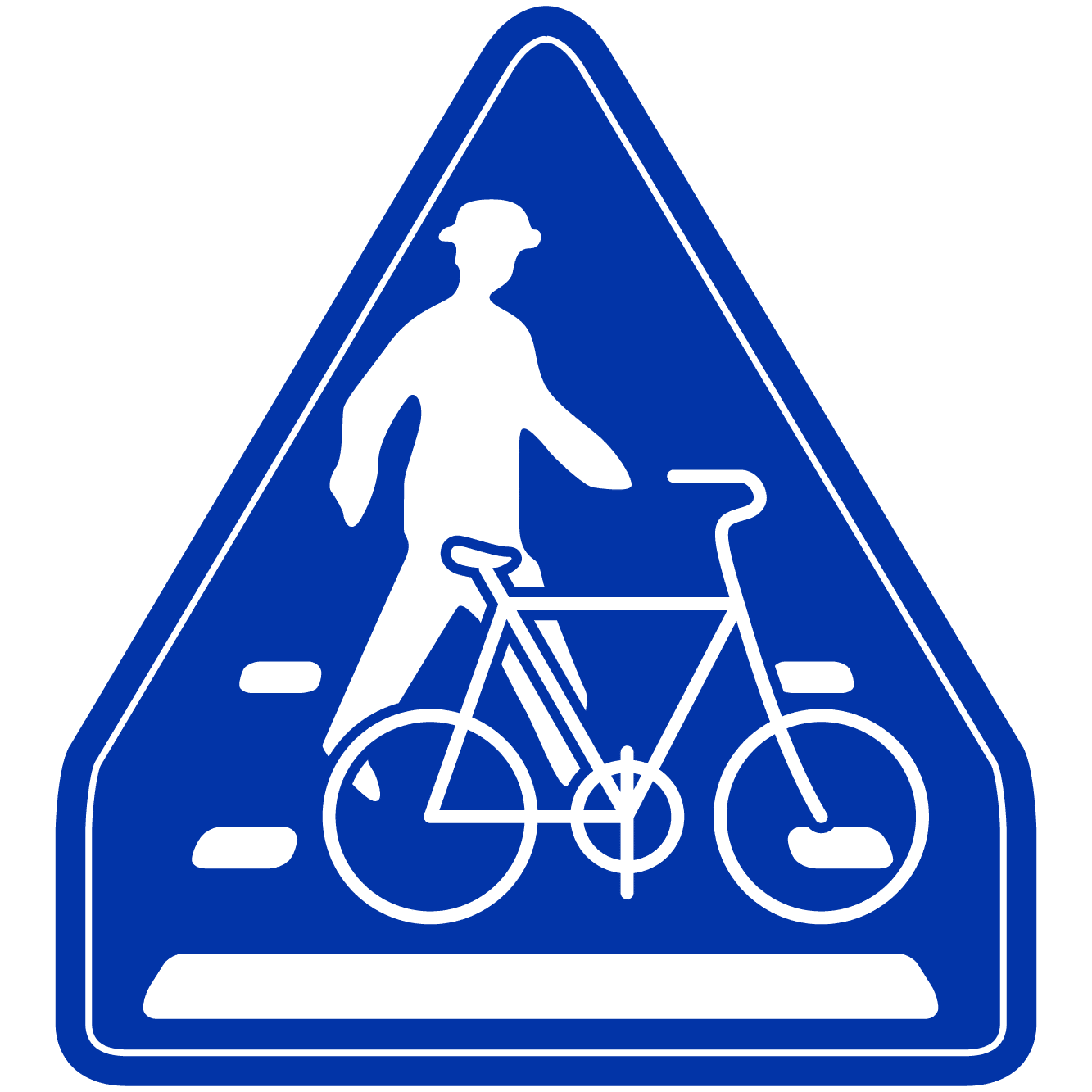
横断歩道・自転車横断帯(Pedestrian Crossing / Bicycle Crossing Zone)
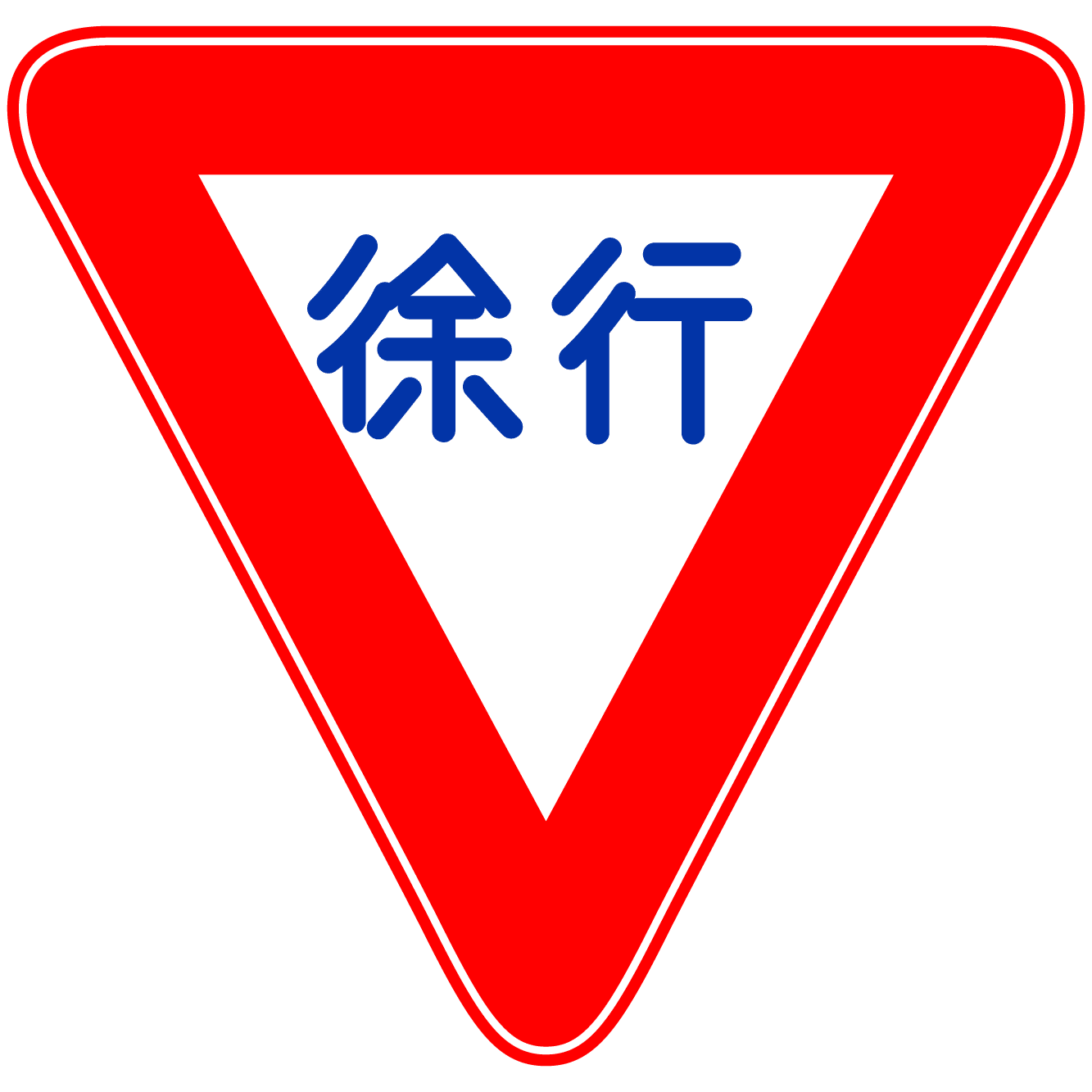
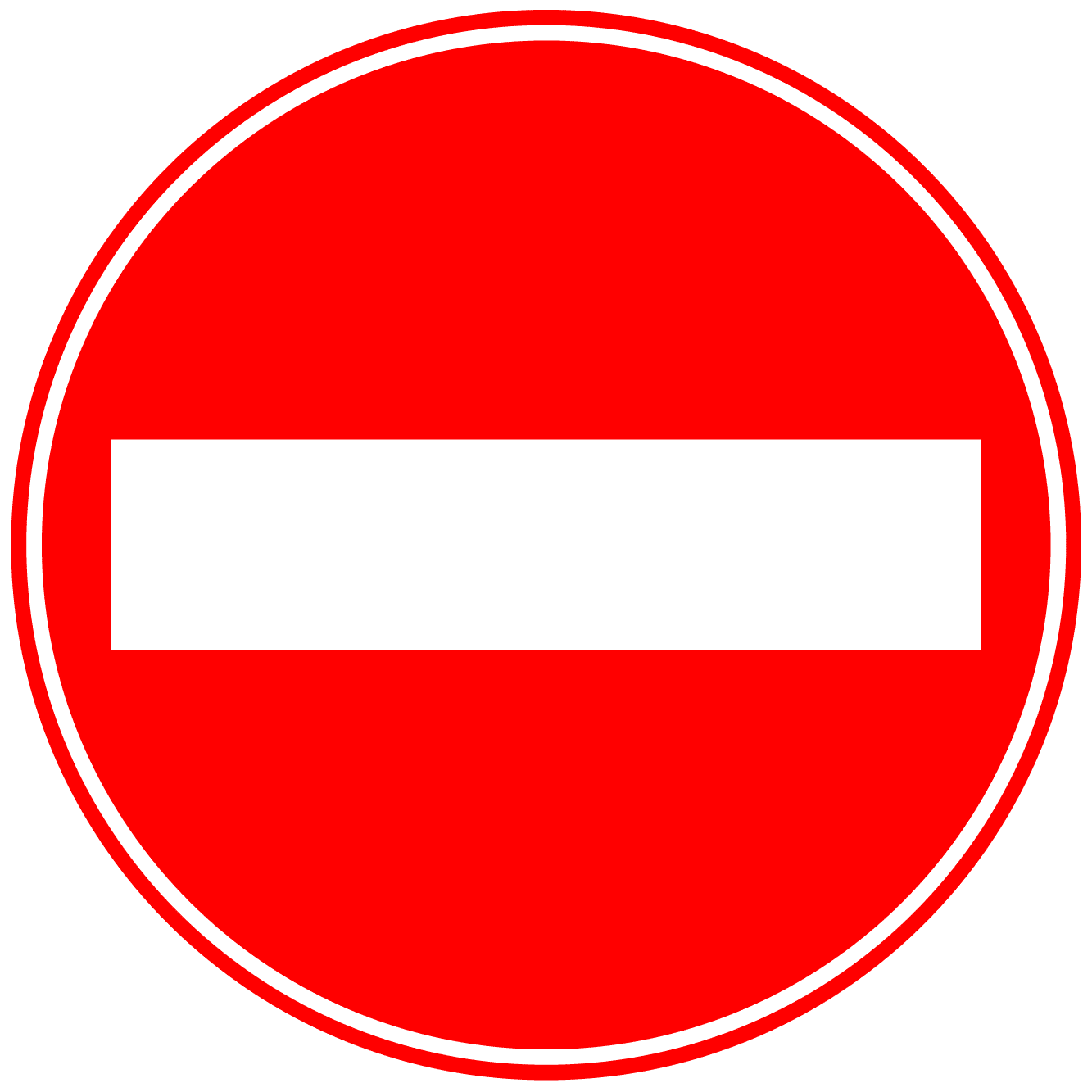
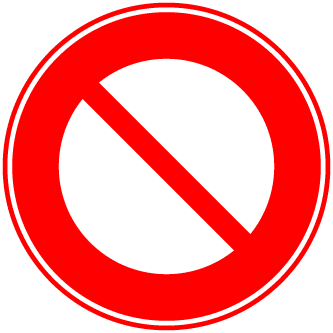
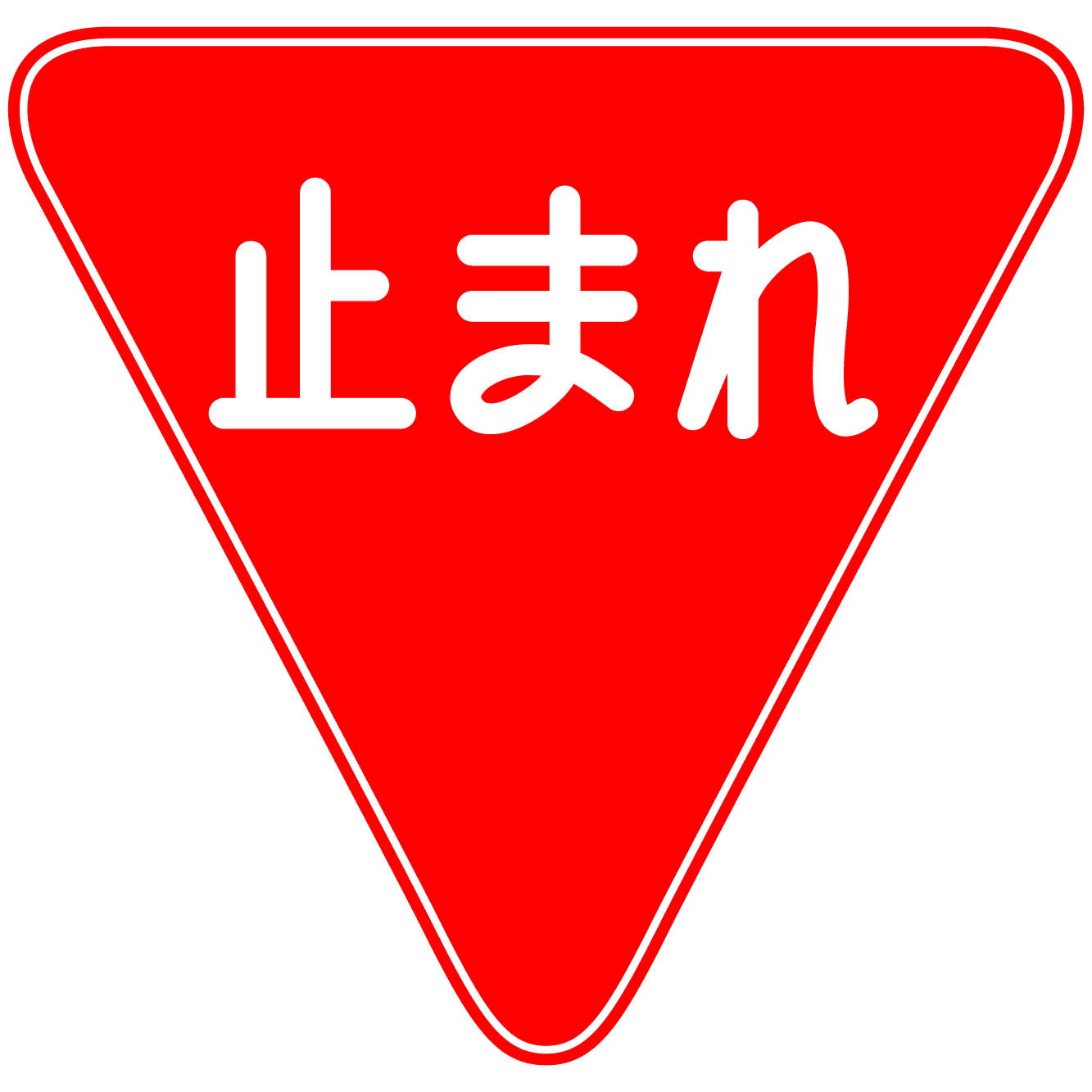

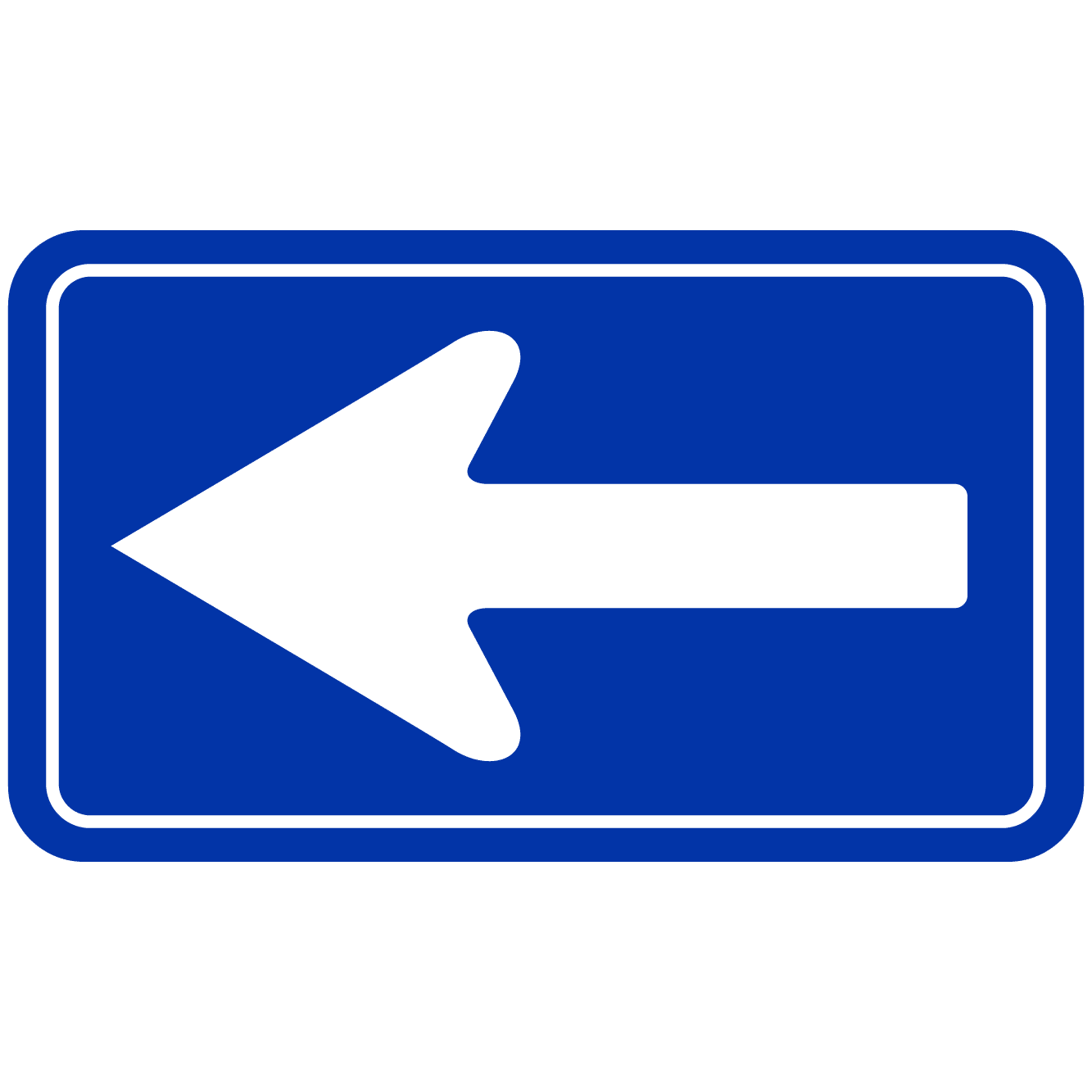
Always Stop at Crosswalks! The Rule of Pedestrian Priority
In Japan, pedestrian safety is given the highest priority. Especially at crosswalks, drivers are legally obligated to yield to pedestrians. This is one of the most surprising points for many foreign travelers.
✅ Basic Rules
-
If a pedestrian is “on or about to enter” a crosswalk → Vehicles must stop.
-
Even if the pedestrian is on the opposite side of the road, drivers may still be required to stop depending on the situation.
-
Do not proceed until the pedestrian has completely crossed.
-
Violation Penalty: ¥9,000 fine + 2 demerit points (quite severe)
🙅♂️ Actions You Must Avoid
🚫 What Not to Do — And Why * Starting before the pedestrian has finished crossing Extremely dangerous and a clear violation. * Honking to rush pedestrians Considered rude in Japan and can lead to trouble. * Stopping on the crosswalk Blocks pedestrians and is not allowed. Always stop *before* the crosswalk.
🌸 A local example from Tsuruoka
In Tsuruoka, it’s common for locals to give a slight bow and say “thank you” when crossing the street. These small exchanges create a pleasant atmosphere and are a beautiful example of Japan’s gentle culture.
Always Stop at Railroad Crossings! A Basic Step to Protect Lives
In Japan, all vehicles are legally required to come to a complete stop at railroad crossings. Even if no train is coming, stopping is mandatory.
This is one of Japan’s unique traffic rules that often surprises foreign drivers—and failing to follow it can be extremely dangerous.
✅ Basic Rules
-
If there is a “Stop” sign and a white line before the railroad crossing, you must come to a complete stop.
-
Ideally, open your car window slightly and check for safety using sound (alarms) and light (flashing signals).
-
Once safety is confirmed, cross the tracks promptly—be careful not to stop in the middle.
-
If you pass without stopping: ¥9,000 fine + 2 demerit points (serious violation)
🙅♀️ Dangerous Actions to Avoid at All Costs
🚫 What Not to Do — And Why * Slowing down without stopping This is a traffic violation. Failing to fully stop at a railroad crossing can lead to deadly accidents. * Following the car in front without checking If the road ahead is blocked, you risk getting stuck on the tracks. *Assuming it’s safe because no train is visible Warning systems may malfunction, and poor visibility can lead to serious collisions. Always stop and check.
🚉 Railroad Crossings to Watch Out for in Tsuruoka City
Local train lines in the Shonai area have many unmanned stations and small railroad crossings. In rural or residential areas, some crossings may not even have warning signals.
Even if locals are used to them, these crossings can be easy to miss for first-time visitors. Drive slowly and always prioritize safety checks.
Parking Rules and Etiquette: Key Points to Avoid Violations
In Japan, parking regulations are very strict. Violations can lead to hefty fines or even your vehicle being towed. Be especially cautious when temporarily stopping or parking on streets in unfamiliar areas.
In Tsuruoka, especially around tourist spots and city centers, parking spaces are often limited. Make good use of coin-operated parking lots and similar facilities.
✅ Basic Rules
-
Parking Outside Designated Areas Is Not Allowed: It’s a violation to park on road shoulders, private property, or empty lots without permission.
-
Check for “No Parking” and “No Stopping or Parking” Signs: These are often posted near apartment buildings, intersections, curves, and slopes.
-
Pay Attention to How Parking Meters and Coin Parking Lots Work: You may need a receipt or payment certificate, so don’t forget to collect your ticket.
-
Avoid Long-Term Street Parking: Even in spots that seem okay at first glance, your vehicle may be reported.
🚫 What Happens If You Violate the Rules?
-
Parking Violation Fine: Around ¥10,000 (varies by location and type of violation)
-
If a “Neglected Vehicle Notice” is placed on your car, it can cause trouble when returning a rental vehicle.
-
If your vehicle is towed, you’ll be charged additional storage fees along with the violation fine.
🅿️ Recommended Parking Practices in Tsuruoka
-
In the city center, “coin-operated parking lots” or “Michi-no-Eki (roadside station) parking” are convenient options.
-
When visiting the Haguro-san area, use designated parking lots such as the one in front of Zuishinmon Gate.
-
Along the coast and at suburban tourist spots, free parking is often available, but be sure to check the signs for usage conditions.
💡Fun Fact
In some parts of Japan, you’ll see parking spots labeled “月極駐車場 (Tsukigime Parking)”, which means they are for monthly contract holders only. Even if they appear vacant, never park there without a contract.
Drive safely, responsibly, and with good manners to avoid any trouble.
How to Use a Gas Station in Japan: Basic Tips to Refuel with Confidence
If you're driving in Japan, refueling is something you'll definitely need to do. Japanese gas stations (service stations) come in two types: self-service and full-service. To avoid confusion, make sure you understand the basic steps for each before filling up for the first time.
⛽ Types of Fuel in Japan
-
Regular : Used by most standard vehicles.
-
High Octane : For high-performance vehicles; often required for sports cars.
-
Diesel : For diesel vehicles only. Using the wrong fuel can cause serious engine damage.
*Always check which fuel to use by referring to the rental car key tag, interior sticker, or user manual!*
🧾 Payment Methods
-
Most stations accept cash, credit cards, transit IC cards, and QR code payments (like PayPay).
-
At self-service stations, you operate the fuel pump using a touchscreen and typically pay in advance.
🚗 How to Use a Self-Service Gas Station (General Steps)
-
Park your car at the fueling lane (make sure the fuel cap is on the correct side).
-
Use the touchscreen to select the fuel type and payment method.
-
Take the nozzle, insert it into the fuel tank opening, and squeeze the lever to start fueling.
-
When fueling is complete, return the nozzle and take your receipt.
*Some self-service stations also provide window-cleaning towels and trash bins.*
👨🔧 Features of Full-Service Gas Stations
-
At full-service stations, staff will refuel your car for you, making it easier if you’re worried about language barriers.
-
You can often ask staff to clean your windows, empty ashtrays, and check your oil as well.
-
Prices tend to be a bit higher, but full-service stations are recommended for those who want peace of mind while traveling.
🛣️ Gas Station Situation in Tsuruoka City
-
There are several gas stations around Tsuruoka Station and along major national highways, most of which operate from 7:00 AM to 8:00 PM.
-
While self-service stations are increasing, full-service stations remain popular in the suburbs.
💡Fun Fact
-
In Japan, it is legally required to turn off your engine before refueling.
-
For motorcycles and kei cars, be sure to remove your helmet while refueling.
For a safe and worry-free driving trip, pay extra attention when refueling. If you're unsure about anything, don’t hesitate to ask the staff for help!
Tips for Using Expressways: How to Drive Smoothly and Safely
Expressways allow you to travel faster and more conveniently to your destination, but their rules and speed feel quite different from regular roads. First-time users often get confused at merges and exits, so it’s important to understand key points in advance.
🚘 Basic Rules of Expressways
-
Left Lane = Driving Lane / Right Lane = Passing Lane It’s good manners to return to the left lane immediately after overtaking.
-
When merging, match the speed and “accelerate” to enter smoothly. Merging while slowing down is actually dangerous.
-
Stopping on the expressway is absolutely prohibited (except in emergencies). If you must stop, turn on your hazard lights, pull over to the shoulder, and place a warning triangle in a safe spot.
-
Make use of SA (Service Areas) and PA (Parking Areas) — convenient facilities where you can use restrooms, eat, take breaks, and refuel. They’re also great for fighting drowsiness.
🧾 ETC Lanes and Toll Payments
-
If you have an ETC card: Use the dedicated ETC lane for smooth, quick passage.
-
*If you accidentally enter an ETC lane without an ETC card, the barrier won’t lift, and you won’t be able to pass through.*
*If you accidentally enter an ETC lane without an ETC card, the barrier won’t lift, and you won’t be able to pass through.*
⚠️ Common Mistakes and Points to Watch Out For


🛣️ Major Expressways Accessible from Tsuruoka
-
Yamagata Expressway (Shonai-Asahi IC, Tsuruoka IC, etc.)
-
Convenient for travel to Niigata and Sendai, and ideal for accessing sightseeing routes.
💡Fun Fact
-
The maximum speed limit on expressways is generally 100 km/h (80 km/h in some areas).
-
When merging, overtaking, or exiting, it’s good manners to signal early with your turn indicator.
-
If you have passengers, plan rest and restroom breaks together to keep everyone comfortable and safe!
For a comfortable driving trip, don’t just focus on speed—remember to stay calm and relaxed too.
Differences Between Traffic Rules in Japan and Other Countries: Avoid Culture Shock!
Japanese traffic rules differ from those in many other countries in several ways. To avoid surprises like “Wait, this is different?!”, here are the key differences you should pay attention to.


Simply knowing these differences in advance will make driving in Japan much safer and more comfortable. “When in Rome, do as the Romans do”—respecting the local rules and culture is the first step to a trouble-free trip.
That's all for today's article.
Guesthouse Watasagi is a guesthouse located right in between the ocean, the mountains, and the city center.
We hope you will enjoy Tsuruoka and Shonai to the fullest with Guesthouse Watasagi as your base 😊.
We also promote the attractions of our local areas of Yamagata, Tsuruoka, and Shonai. The latest updates are posted on Instagram. Please follow us and stay tuned💕
Related Articles
鶴岡観光にはカーシェアがおすすめ!自由に動けてコスパも良い、旅の新しい選択肢
Complete Guide to Getting to Yudonosan Shrine|How to Book a Taxi and Important Tips
🚗 Make your trip in Tsuruoka more flexible! Complete Guide to Rental Cars Near the Station
What is the fully reservation-based “Tsuruoka Sightseeing Liner”?

